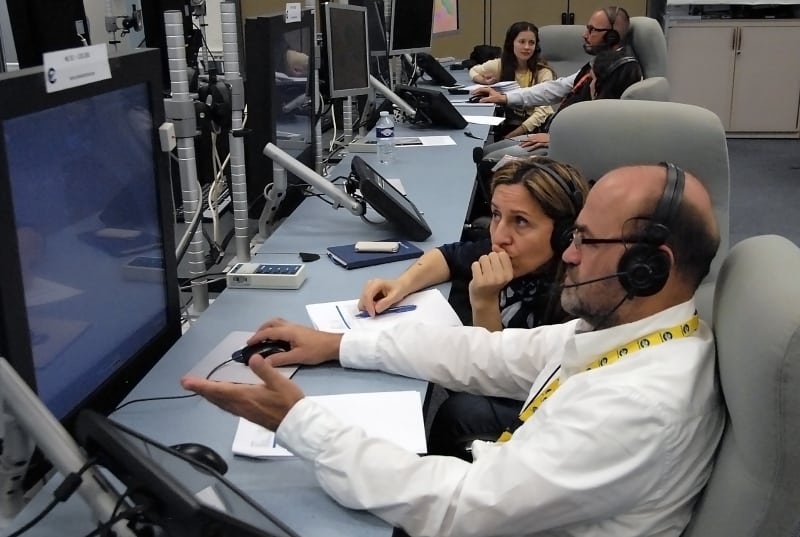 |
| From the bottom: Gabor Petnehazy, Julia Sanchez, Stefan Oze and Anastasiia Sobchenko during the small scale RTS demonstration at the Eurocontrol Experimental Centre. Photo: Eurocontrol |
[Avionics Today 06-16-2016] In late May, a small-scale Real Time Simulation (RTS) successfully demonstrated that Eurocontrol’s Experimental Center is now capable of conducting realistic simulations that include Remotely Piloted Aircraft Systems (RPAS). Three generic en-route sectors were simulated, involving three en-route controllers, 40-minute traffic samples with 52 civil aircraft and three to four RPAS. The RTS aims to evaluate the impact of RPAS integration into manned airspace.
The Experimental Center’s Base of Aircraft Data (BADA) team prepared for the simulation by developing four different RPAS models. These models were made available to worldwide BADA Users in December 2015 and were built by gathering available performance data and constructing profiles for each phase of flight.
The critical enabler for any aircraft model development is availability of aircraft performance reference data. For RPAS, this information is scanty. Two RPAS models were created in collaboration with the Technical University of Catalonia. Researchers there shared reference data originating from RPAS flight recordings as well as know-how on RPAS behavior. The BADA team generated two other RPAS models, based on publically available information on RPAS performance.
By developing representative models in the BADA database, the team could prepare to assess realistic scenarios regarding the implications of differing sets of flight performance in busy airspace.